– “Love-it-or-hate-it” front end styling
– Dodge’s “budget” muscle car
– “E87” 440 Six Pack in FC7 Plum Crazy factory paint
The “new for 1970” Dodge Coronet featured front end styling that was rather unique to say the least. The styling department gave the car a daring facelift that incorporated dual-loop bumpers that surrounded twin grilles, which people seemed to either love or hate. It was strange to be sure; however, today it’s cherished by many!
The Coronet’s sheet metal (on 2-door models) was given revised simulated air scoop indentations while the muscularly sculpted rear quarter panels were shaped the same as the prior year; however, new delta-shaped taillights were incorporated this year. (R/T models were equipped with tacked-on, non-functional side scoops.) The wheelbase remained 117 inches, but the overall length grew some three extra inches due to the front makeover.
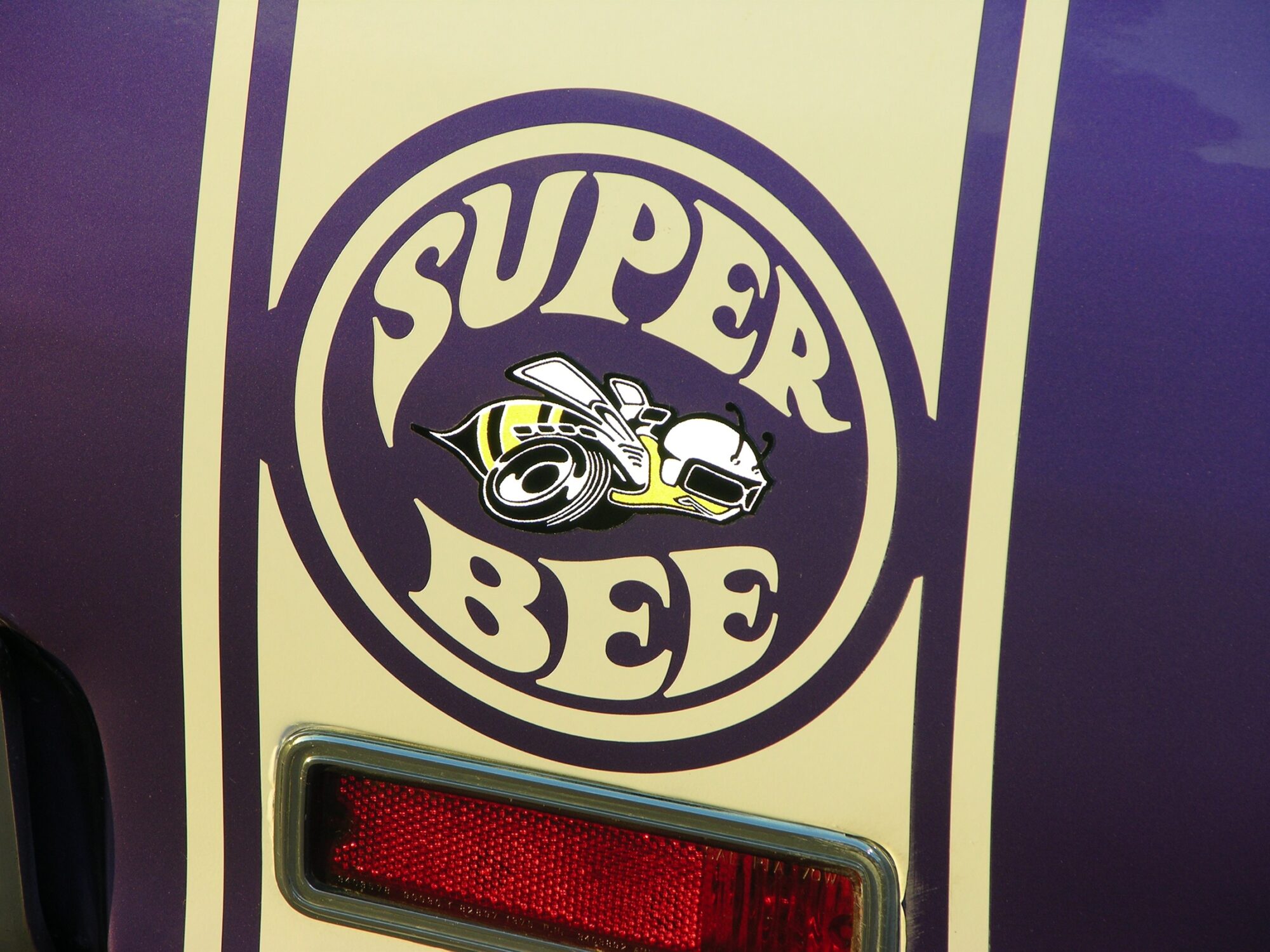
Dodge’s Super Bee was their budget performance model and it came factory-equipped with standard 383 Magnum engine, Rallye Suspension, Charger instrument panel and a manual 3-speed transmission. TorqueFlite® automatics and 4-speed transmissions were optional, and heavily favored for those who knew and appreciated what these cars were all about, street and strip performance!
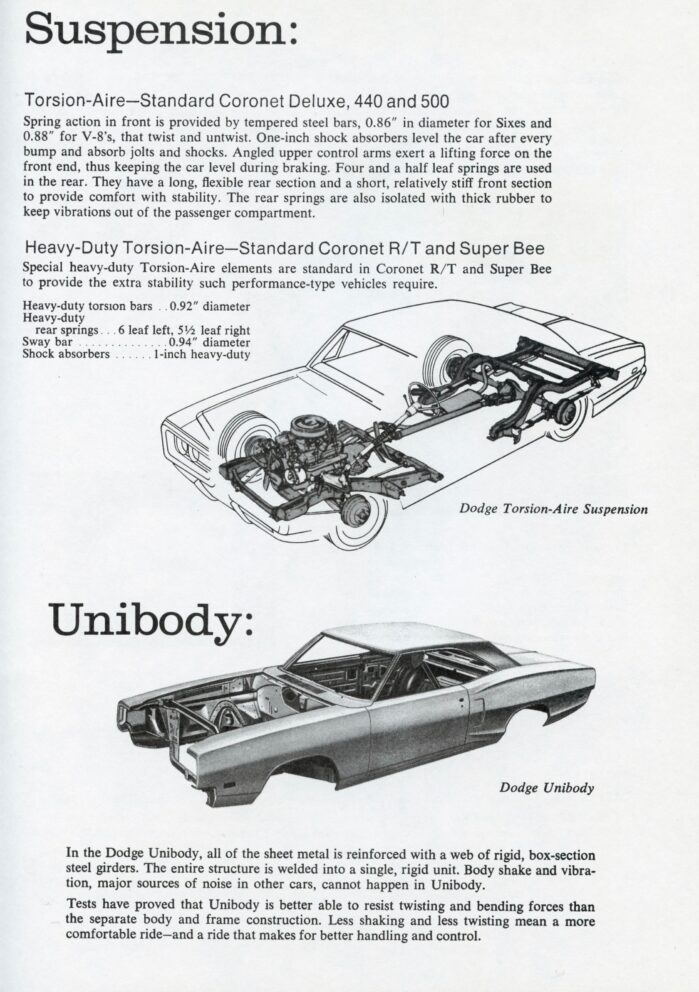
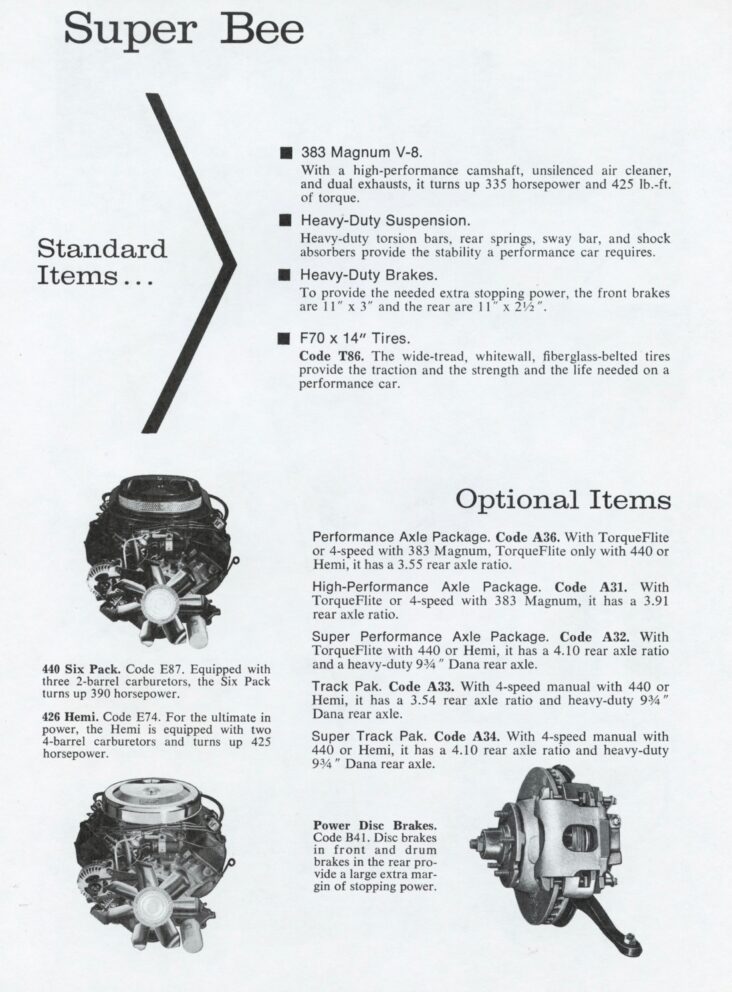
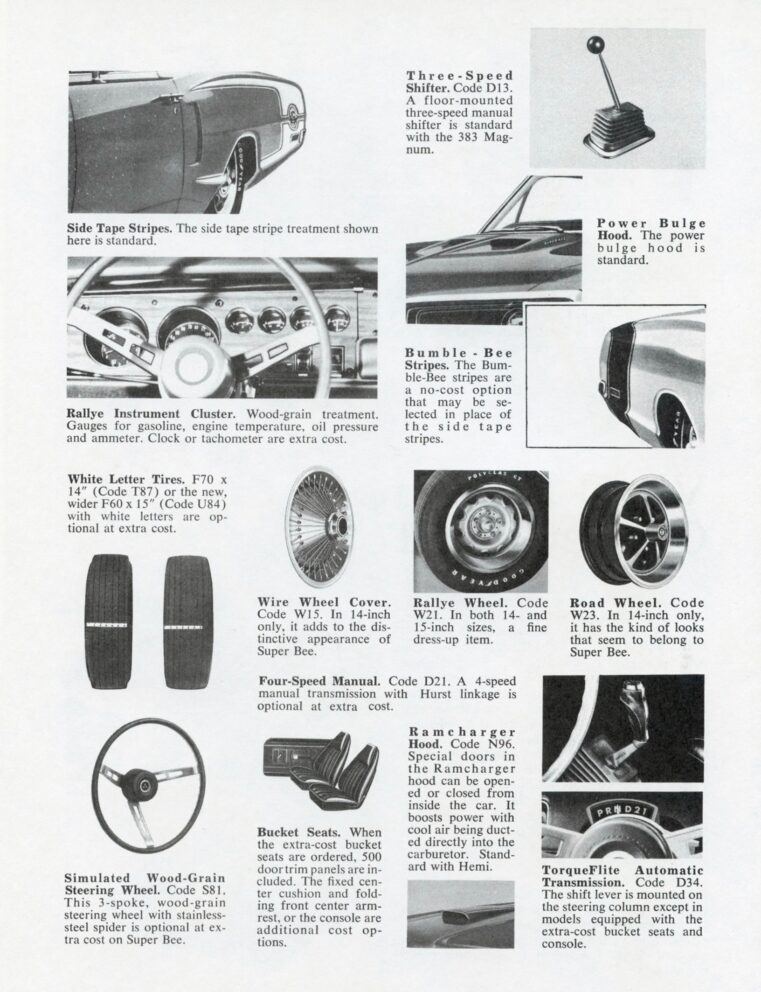
SIX PACK POWER
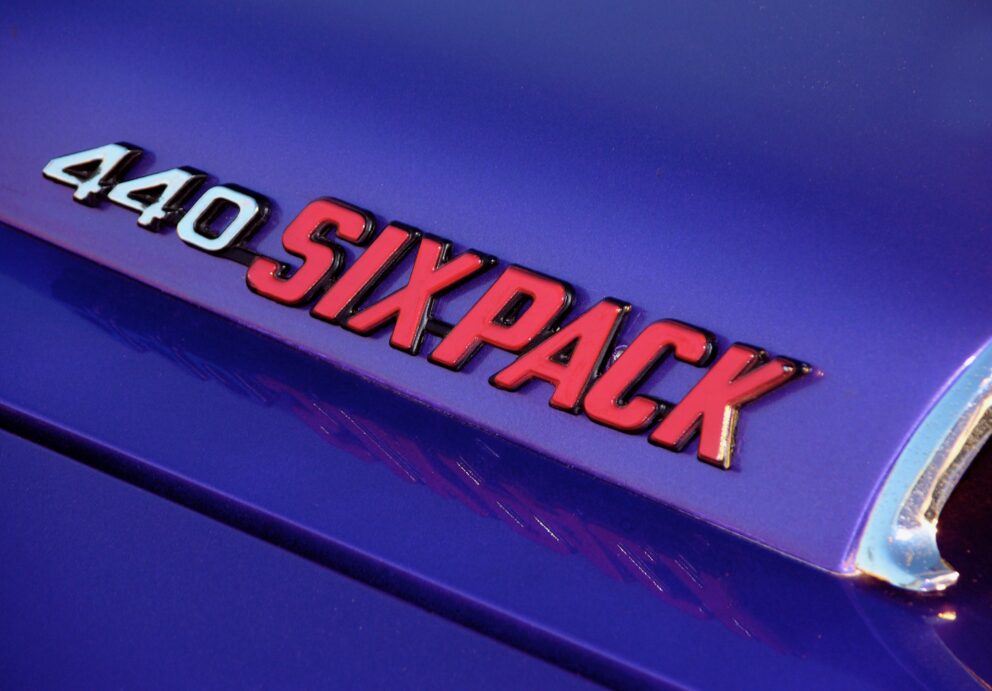
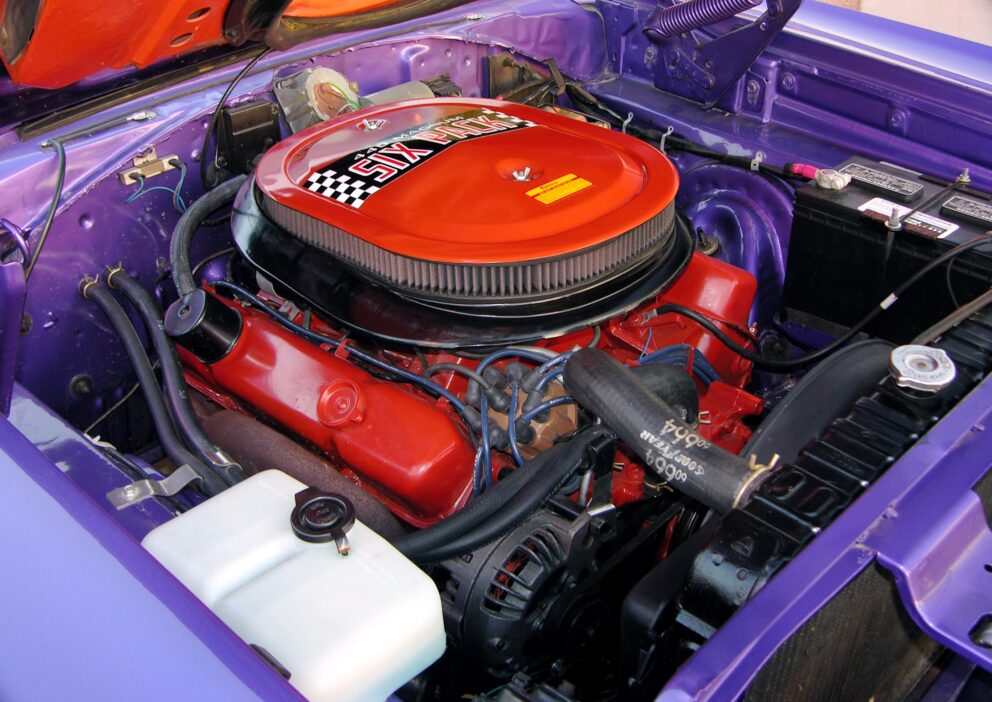
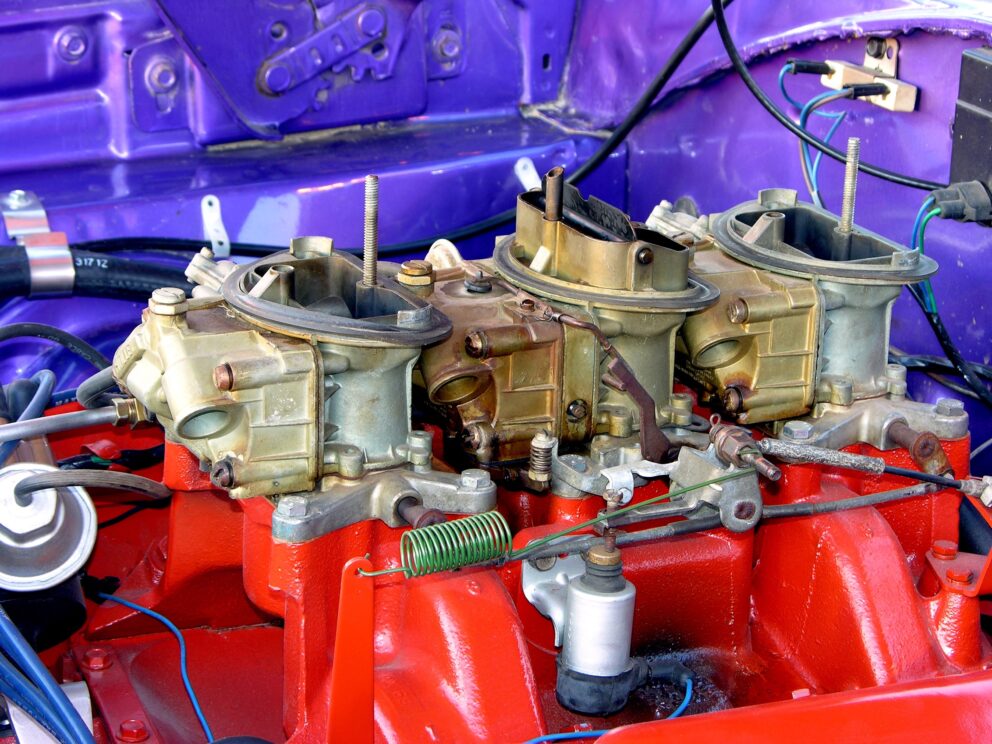
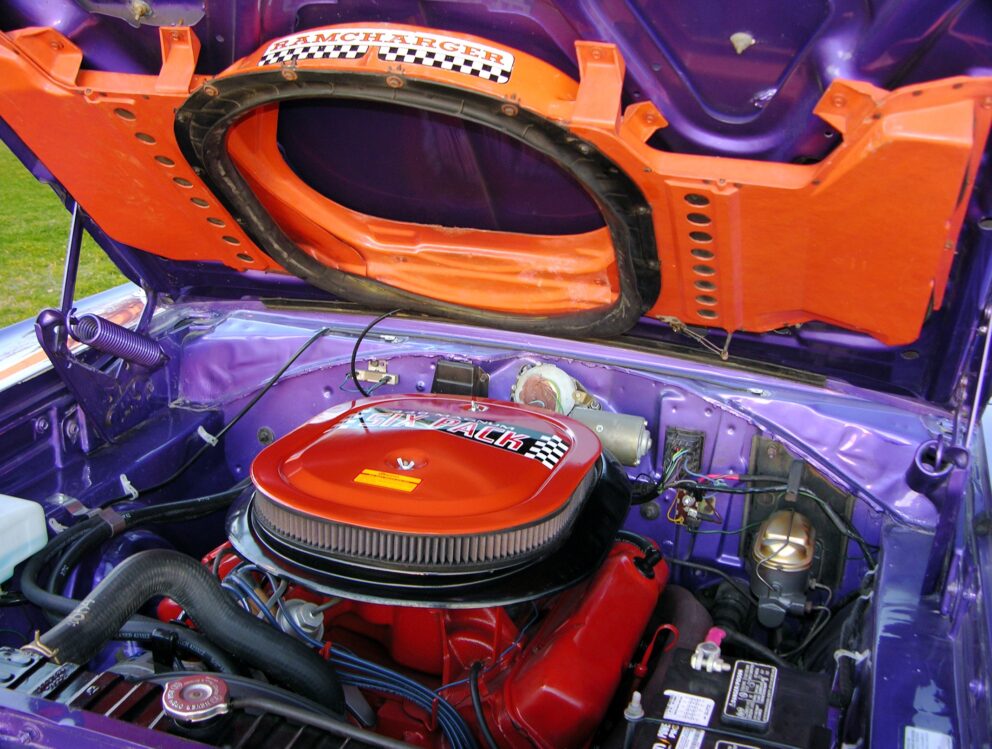
Two engine options could be had on Super Bees: the 426 HEMI® (rated at 425 hp) and the “Six Pack” version of the 440-cubic-inch wedge, which had a 390 hp rating from the factory. The 440 Six Pack was a versatile powerplant as it featured three Holley 2300-series two-barrel carburetors and could deliver good fuel mileage (when driven easy) as well as impressive performance under full-throttle conditions.
What the Chrysler engineers did was design a system that featured a center-mounted 350-cfm two-barrel carb (that handled the primary flow), fit it on the manifold where it had equal-length passages to all cylinders and gave it the usual features, including: idle, primary, acceleration, power and choke circuits. The two outboard carburetors (500-cfm each) appeared similar to the center unit, but operate via primary venturi vacuum. In total, the Chrysler 440 Six Pack induction provides some 1,350 cfm, and it comes in smooth and with excellent throttle response!
The Chrysler Six Pack actually was first available as a mid-year option in 1969, but for ’70, the 440 six-barrel engines were given new design 10.5:1 pistons, new connecting rods with heavier cross-sections, a new lubrite-treated camshaft featuring tapered lobes (with 3-bolt cam sprocket), HEMI roller timing set, heavy-duty rocker arms and HEMI valve springs. The oil pump received a 60-psi relief valve and the intake was now cast iron, built by Chrysler. A very potent powerplant and well worth the extra $249.55 added cost over the standard 383.
High-Performance Cars Magazine road tested a Six Pack Super Bee in their January 1970 issue and it was fitted with power disc brakes, 3.91 Sure-Grip rear end and TorqueFlite, plus it was “super-tuned” on a chassis dynamometer but otherwise completely stock.
They reported that they were most impressed with the Super Bee’s quarter-mile and street performance, and at 60 mph, “you’re just pushing three grand, which is loafing speed for this brawny wedge.” Drag strip times were listed in the 13.70- to 13.80-second range, at 101 to 102.50 mph trap speeds, and they summed up their test with these complementary words: “The Super Bee does excel in many areas. It’s more comfortable than most of the competition, it offers an abundance of engine/transmission/gear options and it’s a dynamic handling and stopping performance car.”
The three Holleys are a thing of beauty and in Dodge dealer brochure advertising it stated that “if you don’t know what a Six Pack is, go back to your knitting. It’s three two-barrels perched on a special intake manifold, perched on a premium 440.”
INSIDE THE BEAST
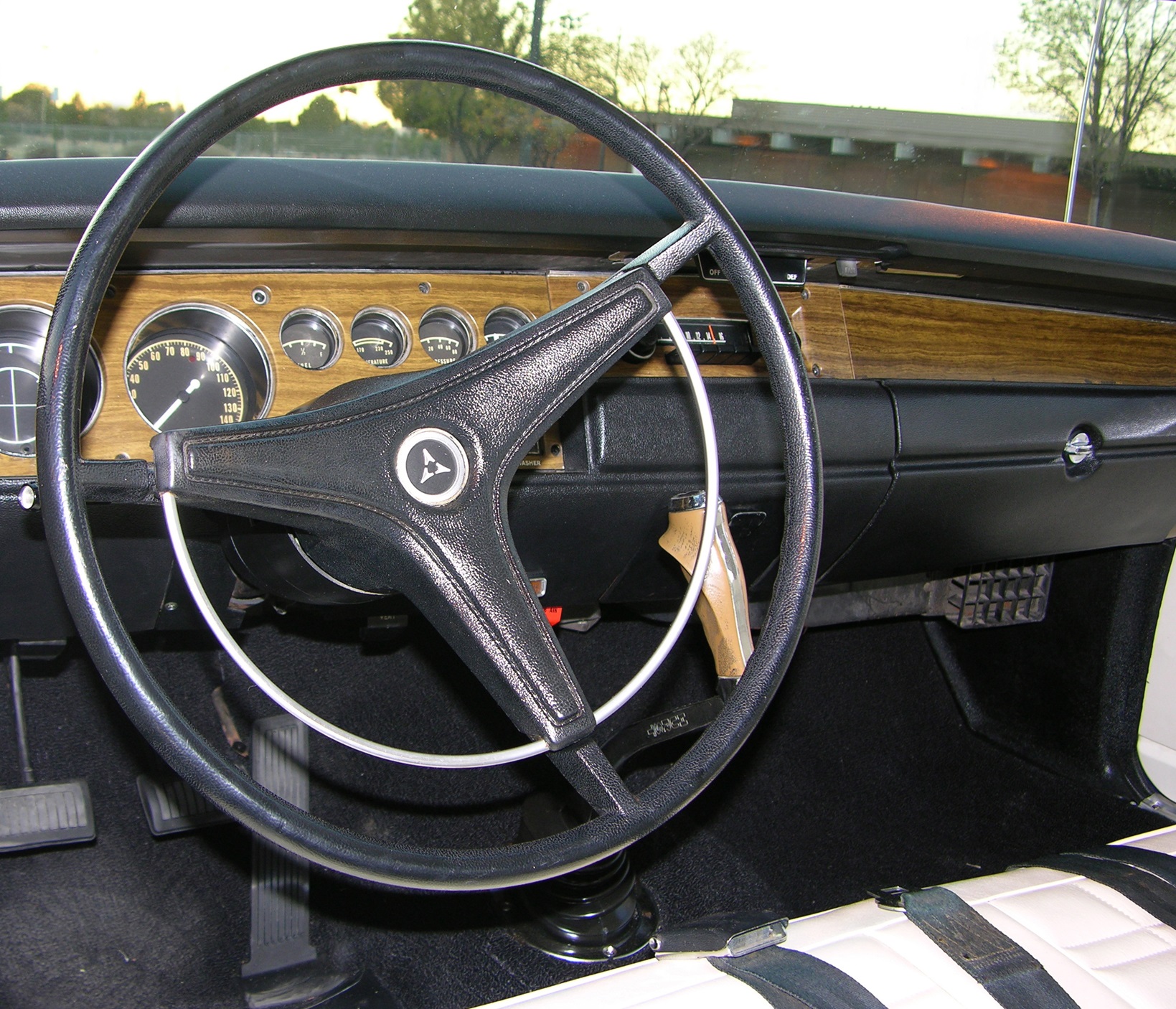
This is the standard steering wheel for a 1970 Super Bee and the standard dash was the Charger model, complete with faux wood finish.
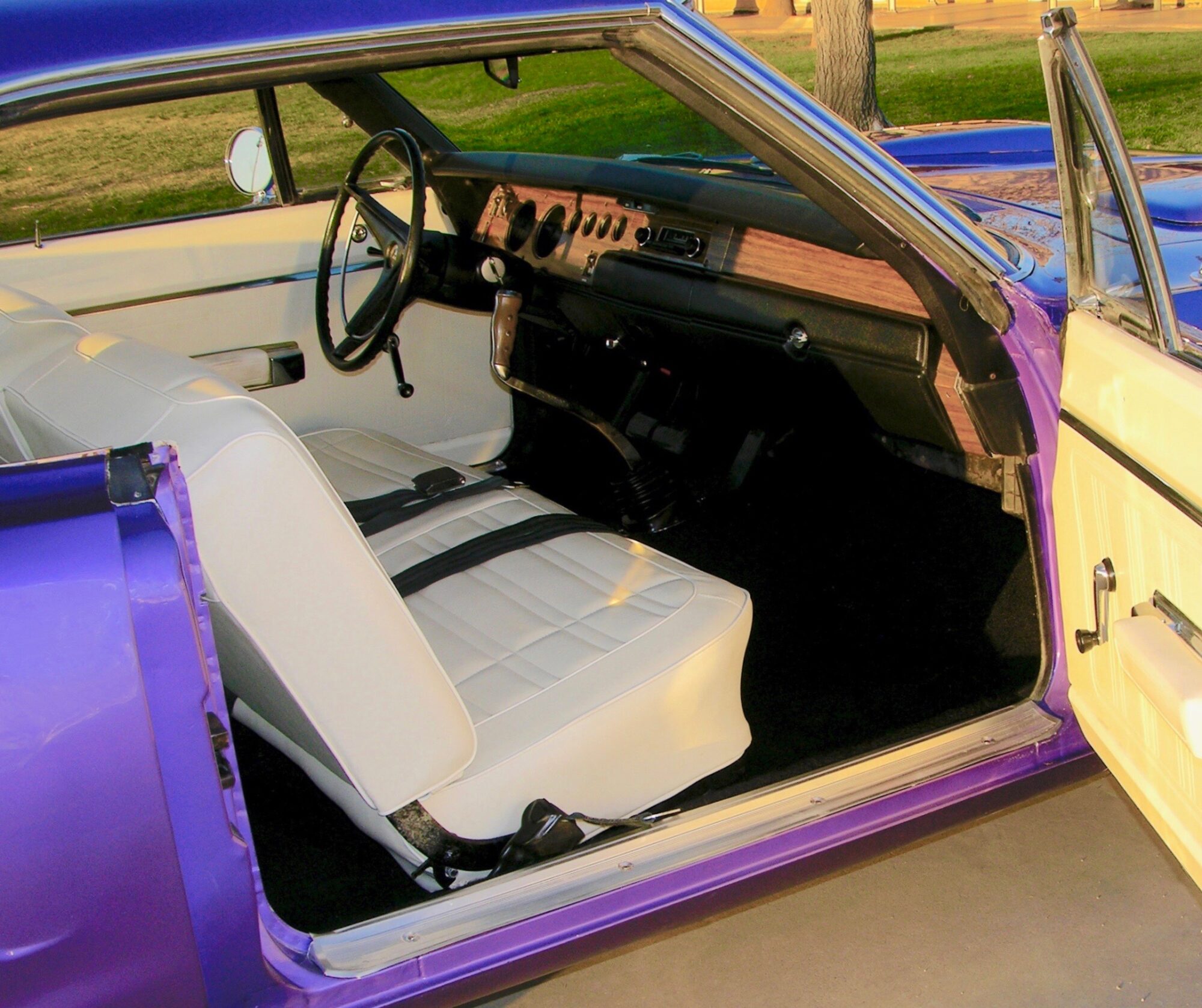
The interior color choice was “H2XW” on the order sheet, which translates into White Bench Seat with Black Carpet. Add in the Hurst Pistol Grip 4-speed and you’ve got a great looking and functional cockpit.
BUMBLE BEE
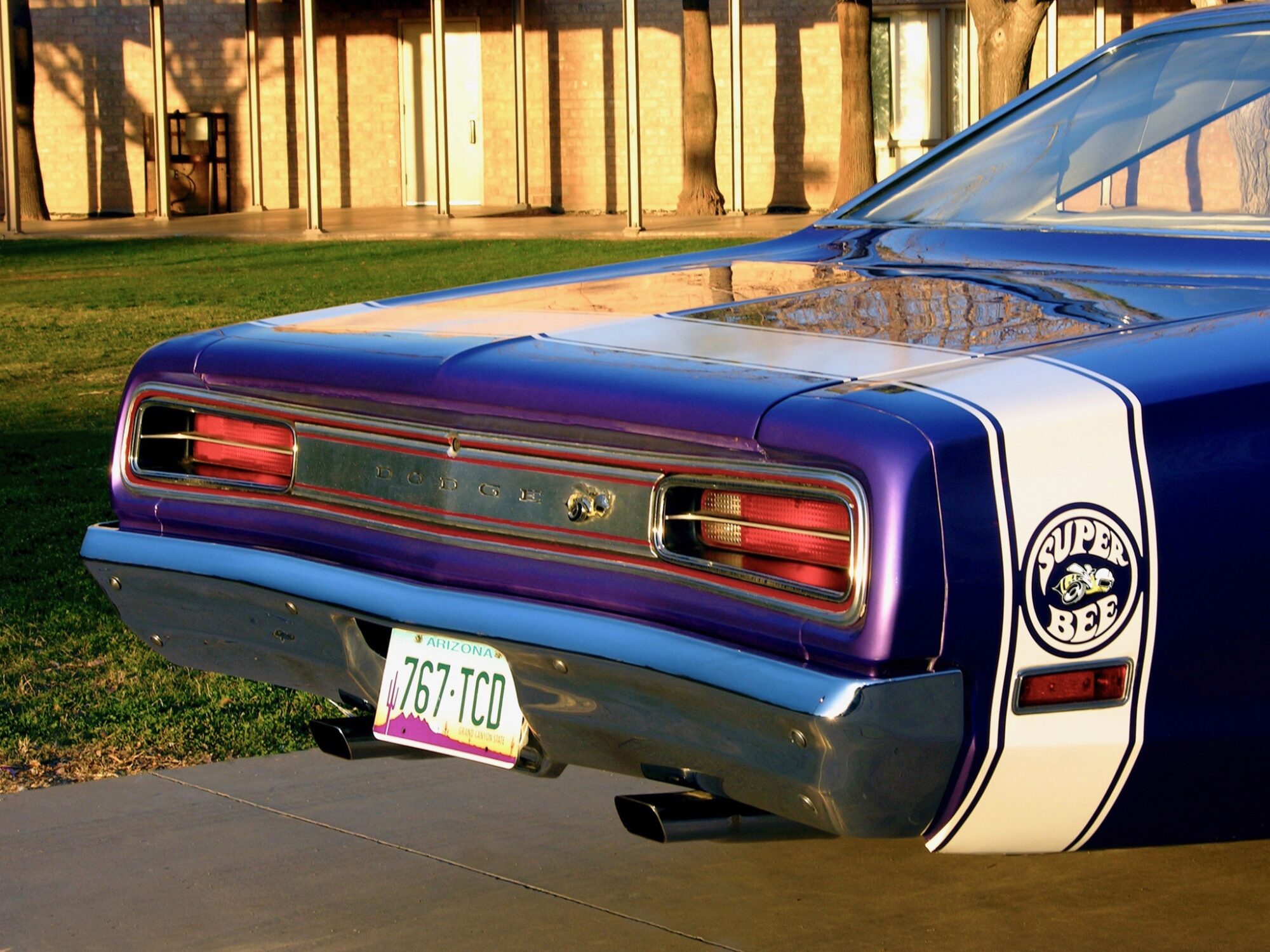
The Bumble Bee stripe indicates a high-performance Dodge and in the case of this 1970 Coronet, it came standard with this white stripe and also available was the longitudinal C-Stripe that ran along (top and bottom) the quarter panels.
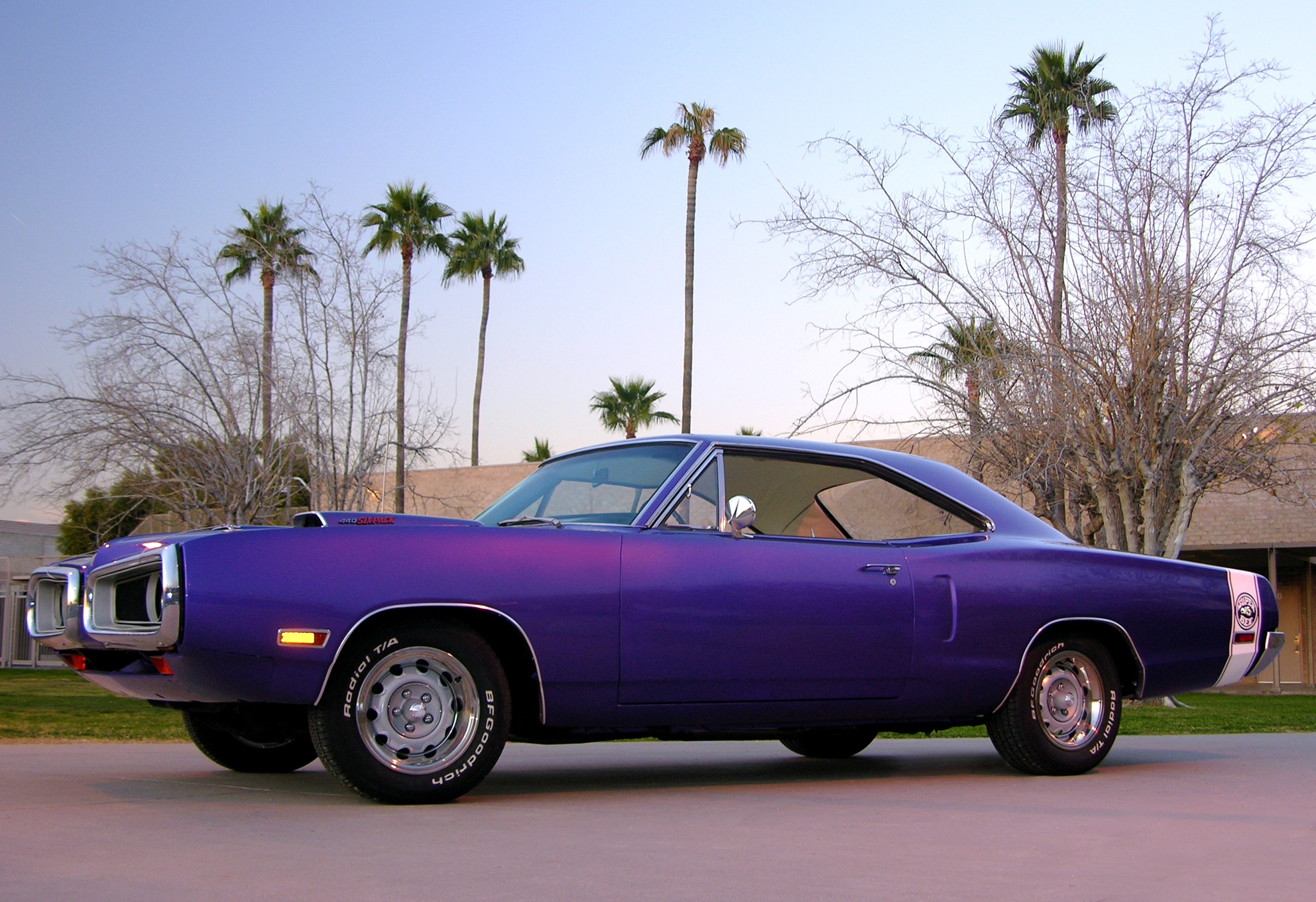
The 1970 Super Bee was the last year for the model (in ’71, the Charger took over as the base for the ‘Bee) and is a great example of Chrysler’s B-body performance car. Records indicate there were a total of 10,614 Super Bee Coupes produced during the 1970 model year run, and this particular car has been preserved to its original condition and is truly enjoyed today just as Mother Mopar® intended all those years ago, as a gear-bangin’ fast and fun car to drive!
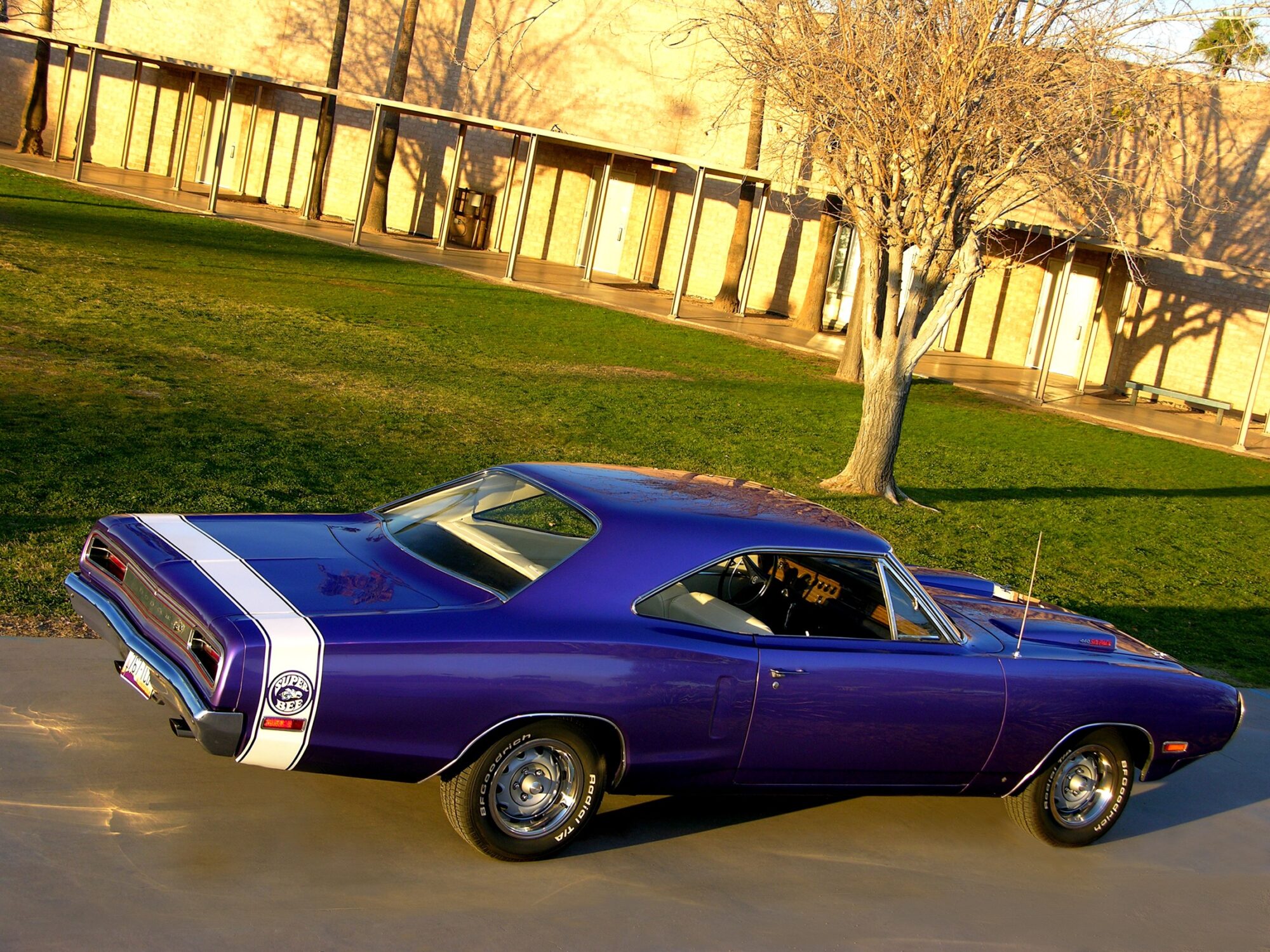
The pictured Plum Crazy Purple-painted Six Pack Super Bee has the factory RAMCHARGER fresh air package, 4-speed gearbox, 3.54 gears (Dana 60 differential) and White Bumble Bee stripe. The car was ordered with a minimum of options, with performance being the priority. It has manual steering, standard drum brakes and not much else, and as checked on the original Broadcast Sheet, today it remains the machine equipped exactly as it was built back in September of 1969, save for modern rubber.
While the Super Bee doesn’t have numerous factory extra-cost options, the High Impact Purple hue and white stripe with white interior gives the car lots of visual impact!
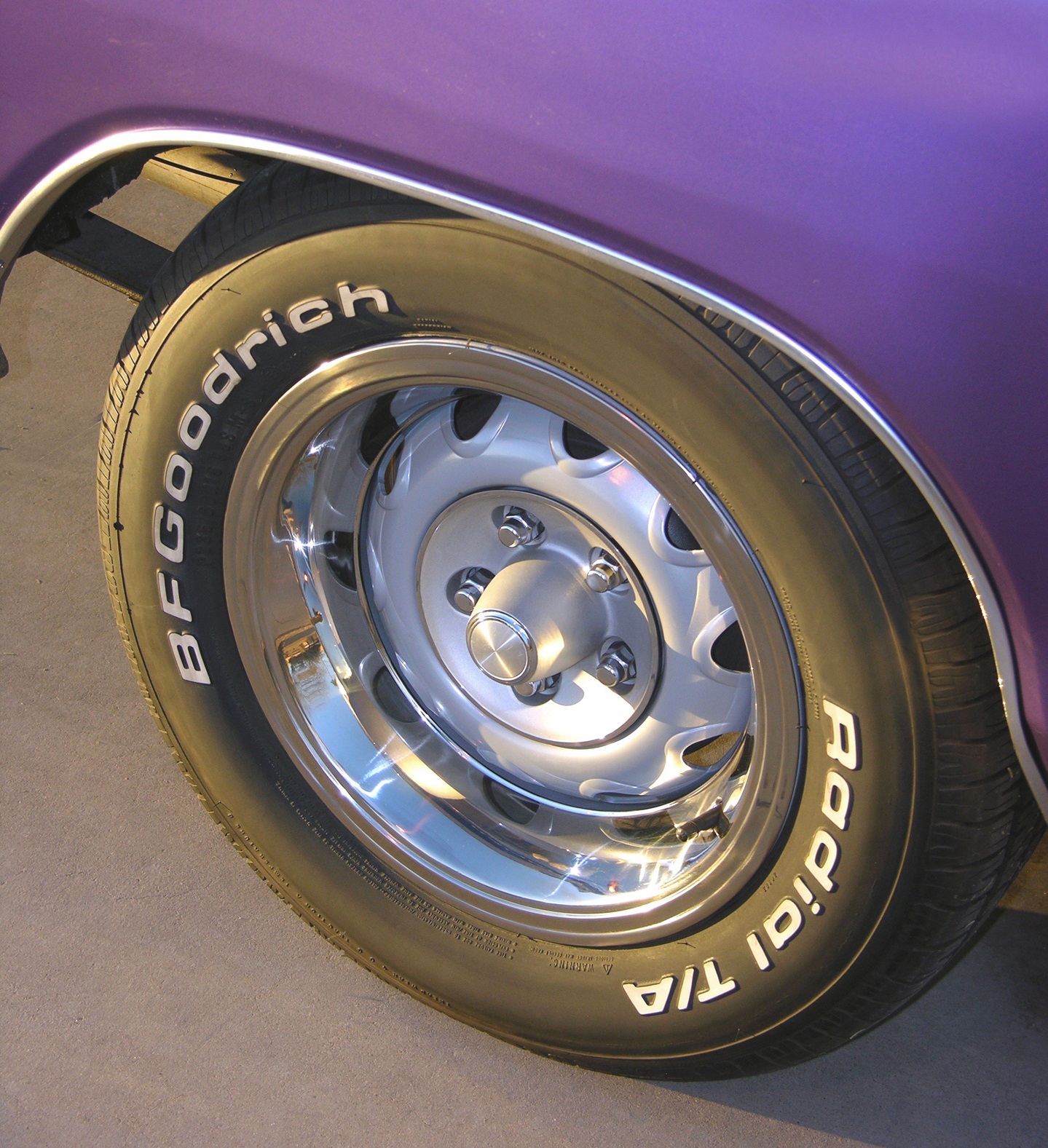
P245/60R-15 BFG T/A rubber is used on this car currently, and the wheels are factory code W21 Rallye models. Goodyear Polyglas was factory stock; however, a modern set of radials are ideal as a daily driver!
FENDER TAG
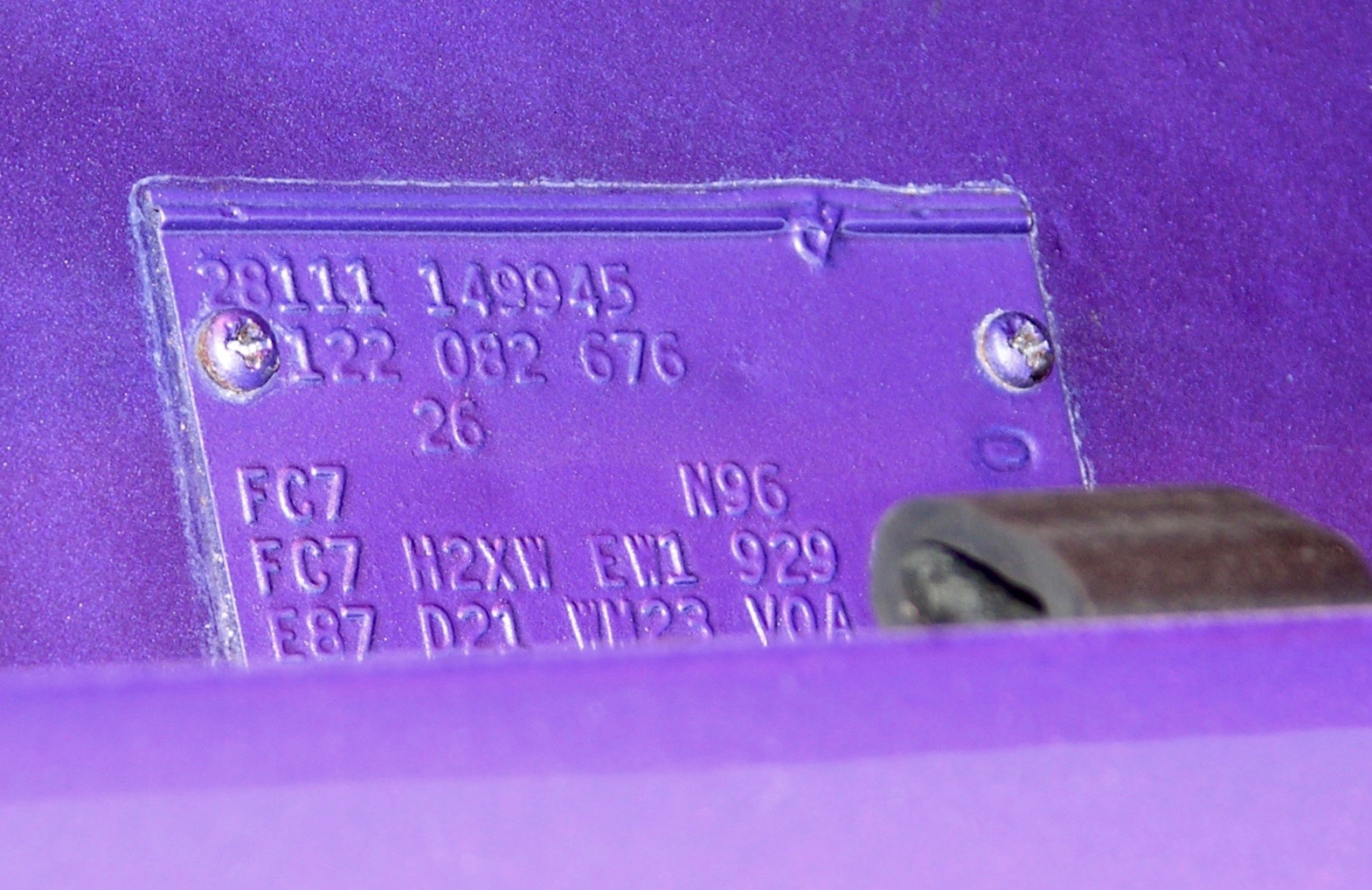
The fender tag is still on the car and the important numbers here are E87 (440 Six Pack), N96 (Fresh Air Package), D21 (4-speed transmission) and FC7 (Plum Crazy paint).
DETAILS, DETAILS
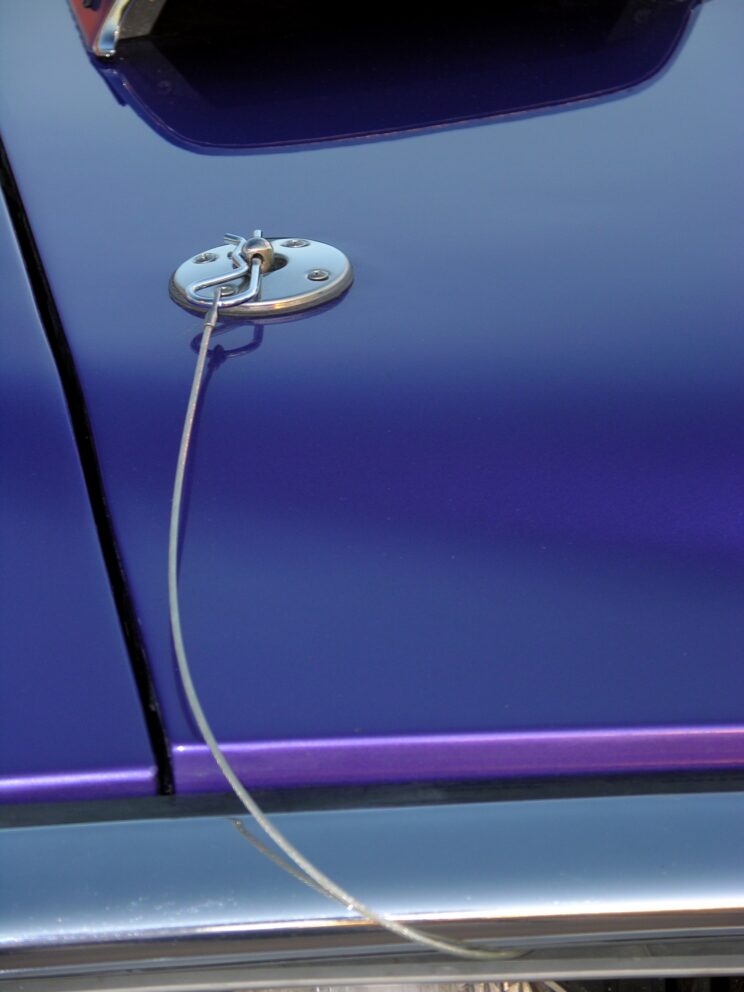
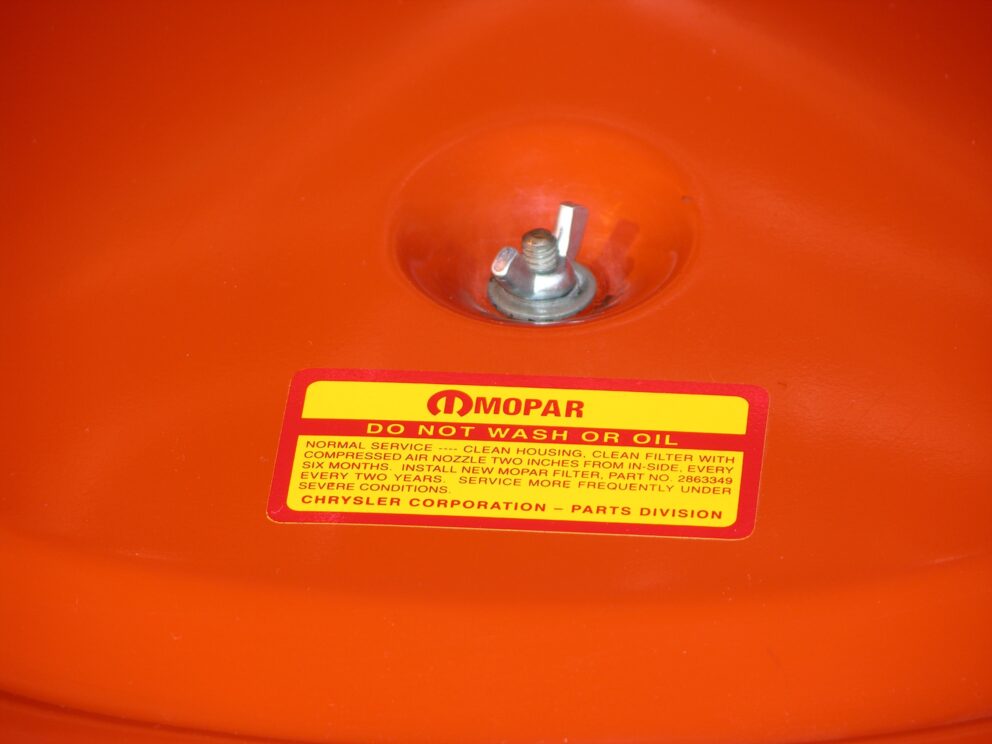
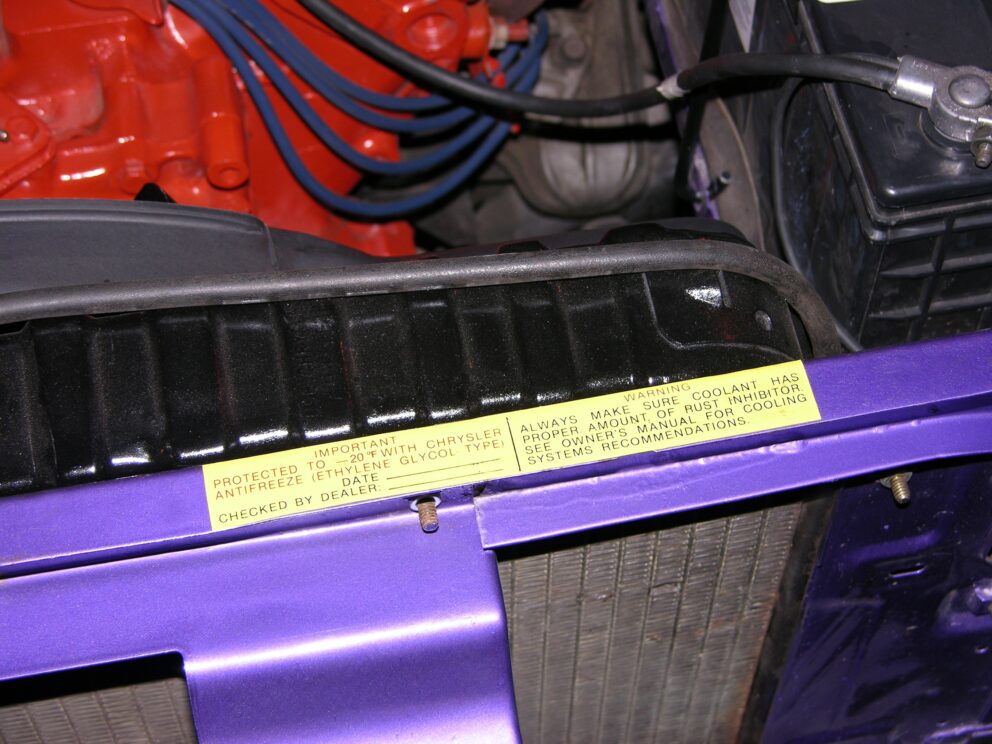
The car has the factory equipment inside and out, and great care was put into the restoration, which includes lots of attention to detail.
DEALER BROCHURE
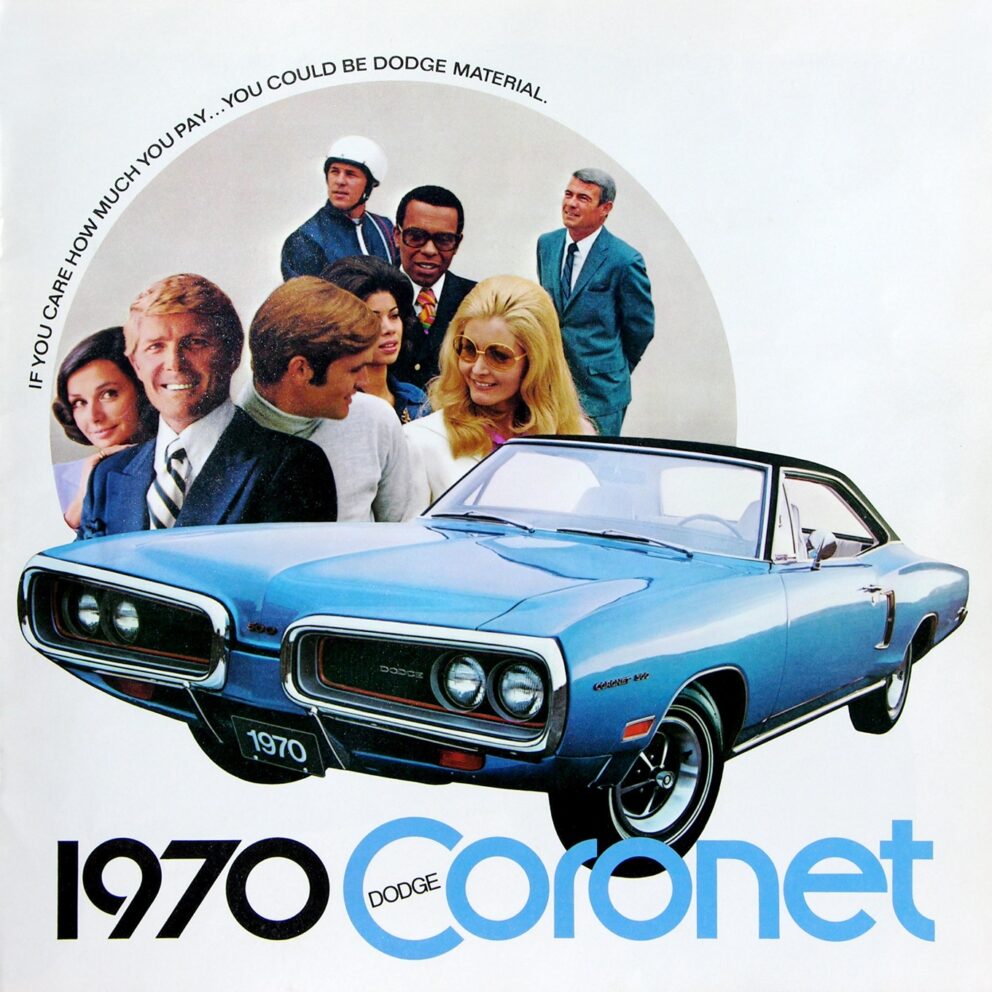
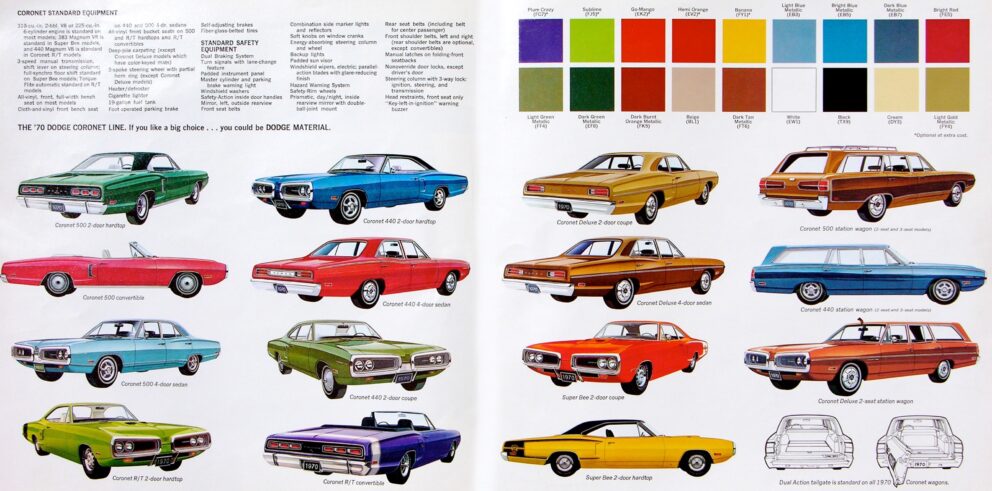
Coronet buyers for the 1970 model year had numerous choices … and the feature car obviously was selected as a “high-performance” choice and in a noticeable color!
Author: James Maxwell
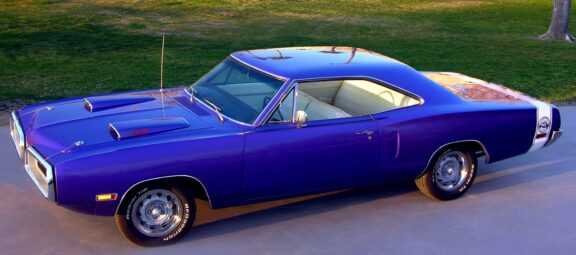
1 Comment
Really cool to see the Dealers Brochure and match that up with fender tag. Great article!